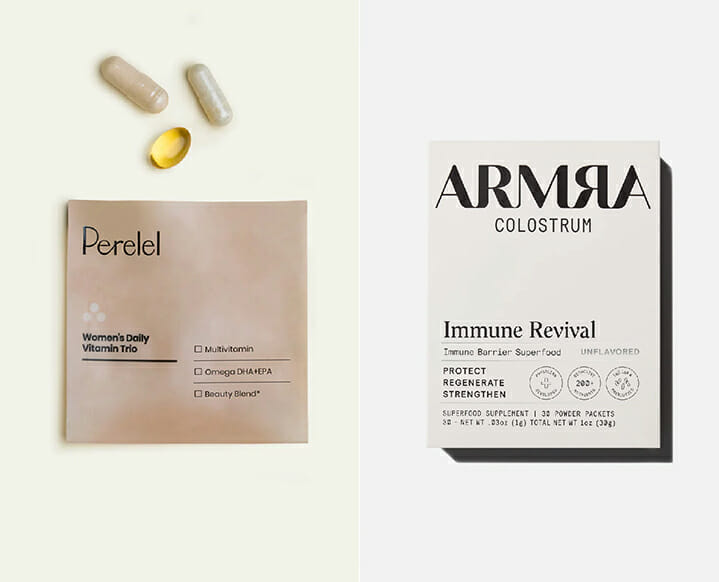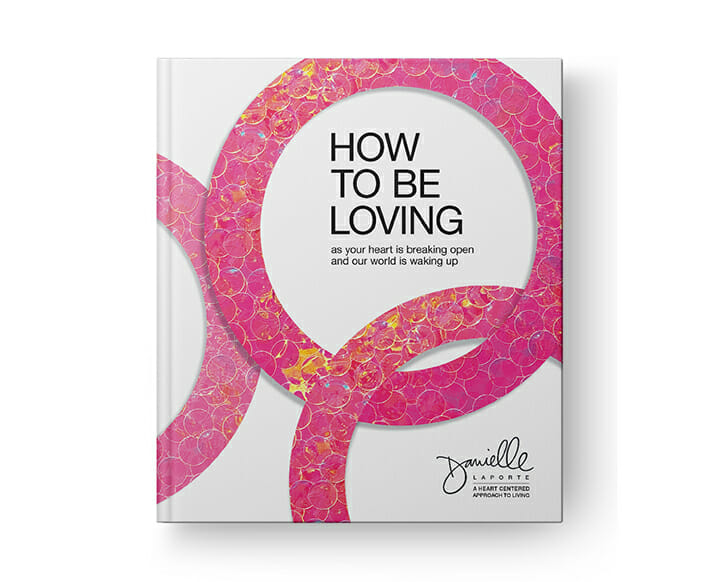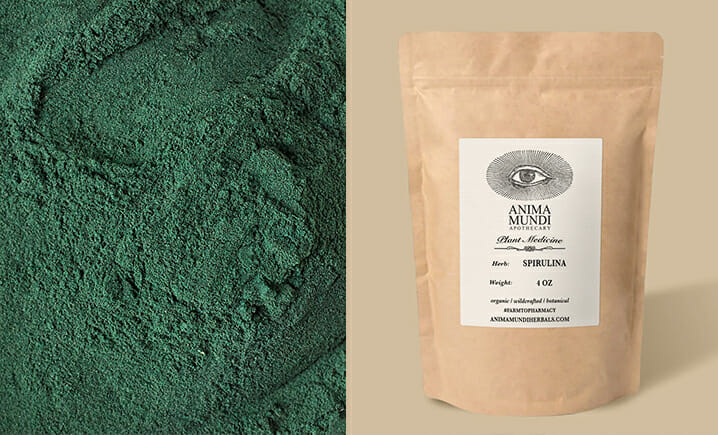
Hectic days filled with too many emails or long to-do lists can be a roller coaster for your nervous system. Triggers of stress or anxiety, no matter how subtle, ignite a cascade of signals and hormones in the fight-or-flight response: epinephrine fires, cortisol surges, your heart races, blood glucose spikes. As a result, your body spends precious energy “protecting” you from that email from your boss’s boss instead of being dedicated to, say, creative problem solving.
That sweet spot of feeling both calm and motivated throughout the day can be evasive for many of us. Lately, one wearable device has made a huge impact on a few team members, including our Editor In Chief, thanks to its powerful effect on HRV.
We're inundated with new wearable wellness tech offers all the time. Many of them are helpful, but the Apollo wearable is actually therapeutic and, lately, we've become hooked. The Apollo lightly buzzes in a variety of rhythms chosen from the app to help you achieve your desired energy state -- whether that's in the flow while working, decompressing after a big day or getting to sleep. How? It has everything to do with the management of Heart Rate Variability or HRV.
If you're looking for tool to help you achieve that fresh-from-forest-bathing flow state even while wading through an in-box landmine, you might like the Apollo as much as we do. After using the wristband for a few months now, we've become huge fans and decided to bring it to our pages. 
First, What The Heck Is HRV?
You may have seen this metric on your smartwatch or fitness tracker already, and ignored it because, truly, what benefit does another number to track actually have? It turns out, HRV—which stands for Heart Rate Variability—is one of the most critical health markers out there when it comes to determining our body's ability to cope with stress. When your heart races under stress, HRV is low. When you’re relaxed, HRV is high.
“The best way to understand this is to think about our heartbeat,” explains Dr. Dave Rabin, board-certified psychiatrist and neuroscientist, and founder of the Apollo and CEO of Apollo Neuroscience. “We often measure how many times per minute our heart is beating. If you take 60 beats per minute, you might assume that every beat is one second apart. But as we breathe, move, do anything, even change our thoughts, our body is shifting the way that our blood vessels are interacting—a function controlled by the autonomic nervous system—and therefore the space in time between each beat. HRV is the rate of change of our heartbeat over time.”
Understanding + Improving Your Stress Response with HRV
Along with the autonomic nervous system, HRV is affected by the vagus nerve. The vagus nerve activates the parasympathetic nervous system (that rest and digest mode) and is kind of like a button you can press to reduce stress. “As HRV goes up, it means we have more activity in the parasympathetic system and we are more resistant and more likely to respond well to stress,” says Dr. Rabin. “As HRV goes down it means our stress response is active, high, way less likely to respond well to stress because we’re already stressed and overwhelmed and more likely to make quick, impulsive decisions that don’t benefit us in the long run.”
So how can we work to keep our HRV up no matter what pings into the inbox during the day? You can probably guess a few of the tactics:
+ Quality sleep
+ Naps during the day
+ Massage and therapeutic touch
+ Soothing music
+ Meditation
+ Breathwork
+ Grounding in nature
+ Mindfulness
“All of these things work, but often require a lot of effort and teaching. And can be really hard to do when you're already stressed out, let alone if you have a mental or physical illness,” Dr. Rabin elaborates. (Not to mention in a cubicle for 8 hours at work.) “We decided to look at all the techniques of how to improve HRV without requiring a lot of effort on the individual's part.” Enter the Apollo™ wristband.

What Does An HRV Device Actually Do?
Imagine a good friend gently squeezing your hand in a tough situation, a pet cuddling in your lap while you work, or the rhythm of a child or loved one sleeping close by. The Apollo wristband provides subtle, vibrating touch therapy to mimic the receptors that stimulate our vagus nerve. Like a wearable hug for your nervous system.
Worn on the wrist, ankle, or near the heart by clipping it to clothing, The Apollo uses touch therapy to deliver gentle, soothing waves of vibrations that help you stay in that parasympathetic state.
It's an experience that has to be felt to be understood, but for those who understand the value of high HRV, consider this a cheat mode if you need to skip your morning meditation or just need extra support during a stressful week. We've found that wearing The Apollo wristband during hectic mornings has helped to retrain our stress response over time and become a treasured tool to pop on during meetings, before big events, during a commute, or just to tackle a stressful chore.
The Apollo comes with an app that is paired with the wristband so you can select what you need throughout the day and switch between modes. Tap "Focus" when you sit down to work or "Social" when you need to pep up without anxiety.
Most Apollo users identify sleep support as a priority. The device can be worn during the day or at night, when your mind is racing, to help you sleep. Over time, your nervous system learns to recover from stress more quickly, so you can relax, sleep better, and find deep, meaningful focus.
There are several modes that support rest including: "Power Nap", "Calm", "Unwind" and "Fall Asleep". You can even pre-schedule the wearable to turn on ahead of time -- say "Unwind" at 6PM to remind you to step away from work or at 10PM to cue your mind and body to prep for sleep.
Like any wellness routine, consistency with the Apollo is key—it's recommended to wear the wristband at least 3 hours a day, 5 days a week. After testing thousands of Apollo users in the Apollo Neuroscience clinic and running seven clinical trials, their results are pretty impressive. Users experience:
+ 40% less stress and feelings of anxiety
+ 11% increase in HRV
+ Up to 25% more focus and concentration
+ 19% more time in deep sleep
As this editor can attest, I am still in flow state even while writing this article under deadline!
The Long Term Health Benefits Of HRV Regulation
Entering into fight-or-flight response while we’re sitting at your desk or in a meeting can be pretty useless -- not to mention damaging to our health. Your body sends all this glucose around for energy you don’t need, so it gets stored as glycogen or fat, and any “protective” inflammatory response is just inflammation. Over time this can lead to increased risk of cardiovascular disease, impaired immune function, and reduced performance and recovery.
“High HRV generally confers, from the studies across the board, a greater level of resilience, a greater level of recovery, and a higher likelihood of performing consistently well in mental, physical or emotional tasks. Restoring balance becomes a natural, easy thing to do,” explains Dr. Rabin. “I know people who are in their 60s, who are very fit, who have HRV peaks in the 200s. Because there's no peak, it's really up to us. And it's interesting to explore how resilient, how adaptable we can be. And I think as a biomarker, HRV creates a really nice story around human potential as something that we have yet to discover.”
Ready to find your flow state? Tell us which of Apollo's functions appeal to you most? This story is not sponsored, our team just truly loves the wearable. As with most products mentioned on TCM, our links to shopping do contain affiliate offers through which we may make a commission on reader purchases.
Are you already paying attention to your HRV? Want to learn more or have questions about the Apollo? Let us know in the comments!
The post We Tried It: Can Wearable Tech Help You Sleep Better + Fight Stress? appeared first on The Chalkboard.
from The Chalkboard https://ift.tt/I7JDp4q
via
IFTTT







































